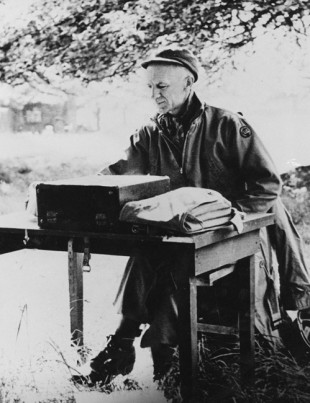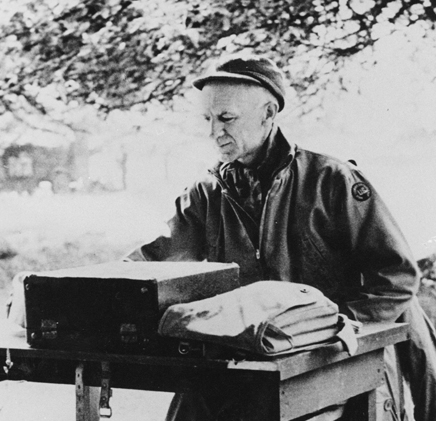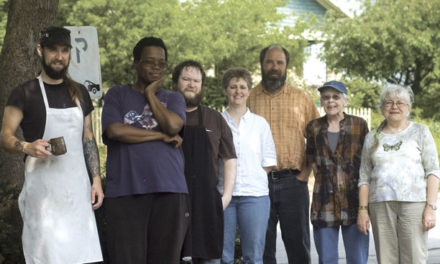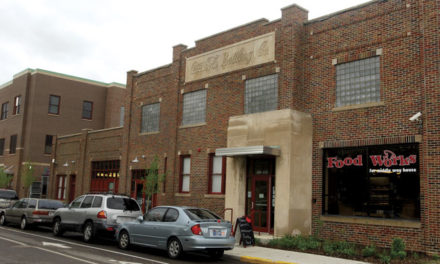
The sculpture of Ernie Pyle now in production is inspired by several photos, such as this one of the correspondent reporting from the European theater during World War II. It is expected to be unveiled in a ceremony during Homecoming at IU in mid-October. Photo courtesy of the Indiana University School of Journalism Archives
BY ELISABETH ANDREWS
Journalism faculty and students at Indiana University have long been encouraged to follow Ernie Pyle’s example. Soon, they’ll be able to work alongside him.
This year, the university commissioned a life-size bronze sculpture of the renowned World War II correspondent, a Dana, Indiana, native who attended IU in the 1920s and wrote for the Indiana Daily Student. The sculpture will reside in the university’s Old Crescent outside the journalism program’s newly designated home in Franklin Hall. It will depict Pyle sitting at a table, perched on an ammunition box, composing a dispatch from the field on his typewriter.
A second ammunition box, cast in bronze, will rest on the opposite side of the table, inviting others to share the space with the Pulitzer Prize winner. “People can put their laptop right on the table and type with him,” says sculptor Tuck Langland.
Langland created the sculpture of former IU President Herman B Wells that occupies half a bench, also in the Old Crescent. As with the Wells sculpture, whose outstretched hand is said to bring luck to those who grasp it, Langland hopes the Pyle sculpture will encourage interaction. “You’ve got to have that if you’re going to make it part of life on campus,” he says.
The sculpture is in part a response to the concerns of IU journalism alumni and faculty who feared that moving the academic program from its current home in Ernie Pyle Hall would diminish the writer’s legacy. The move to Franklin Hall, beside IU’s iconic Sample Gates entryway, corresponds to journalism’s inclusion in a new Media School that will also incorporate film, telecommunications, and components of communication and culture.
Paul Tash, an IU journalism alum who’s CEO of the Tampa Bay Times and chairs the Pulitzer Prize board, explains that Pyle is revered in part because he ultimately sacrificed his life to get the story. “He was a martyr,” says Tash, referring to Pyle’s death in 1945 from Japanese machine-gun fire. “To have been killed just as the war was reaching its conclusion makes him a Hoosier hero.”
The details of the sculpture show Pyle in bomber jacket and goggles and includes a tiny “Kilroy was here” scratched into the table.
Says artist Langland, “He’s writing a column in 1944 somewhere in northern France. His typewriter’s broken so he’s reaching to manually reset the roller. He has a pretty serious look on his face. War is gruesome.”











